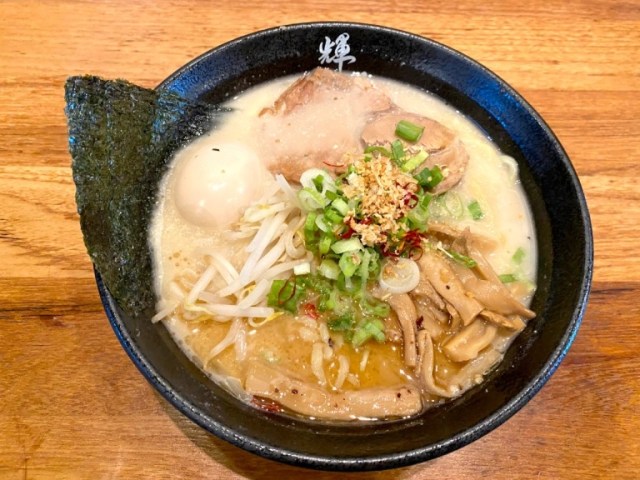
The food tasted great on our trip to this Seattle ramen restaurant, but some things were very different from what our reporter is used to in Japan.
On their overseas travels, P.K. Sanjun and the rest of our Japanese-language reporters like to do two things: immerse themselves in the local culture, and see what sort of inroads Japanese culture is making abroad. So when his stomach started rumbling on his recent trip to Seattle, P.K. asked one of his American friends if he could recommend a good ramen restaurant.
P.K. was in luck, as his friend quickly suggested Kizuki, a combination ramen restaurant and izakaya (Japanese-style pub). Overseas Japanese food can be sort of hit and miss, but Kizuki is managed by the same company that runs Kukai, a popular chain of ramen restaurants in Japan, so P.K. had high hopes for its flavor and authenticity.
Even though it was early in the evening on a weekday, almost every seat in the restaurant was full, and this was the first thing that made P.K. smile. It wasn’t all that long ago that Japanese food in general hadn’t yet achieved mainstream popularity overseas, and even after sushi earned favored-food status among the international foodie community, it was several years before ramen’s image in the west moved beyond cheap instant noodles. Seeing the people of Seattle experience the joy of restaurant ramen brought joy to P.K.’s heart as well.
And the second thing that made P.K. happy? Kizuki’s ramen is legitimately tasty, and not by the more modest expectations P.K. has learned to apply to eating Japanese food outside Japan. Even judged by in-Japan standards for ramen, Kizuki does a great job, and P.K. thoroughly enjoyed the flavor of the garlic tonkotsu shoyu ramen he’d ordered, which the restaurant says is the most popular item on their menu.
However, there were also some things that P.K. wasn’t so thrilled about, starting with the price.
A bowl of garlic tonkotsu shoyu ramen costs US$15.50, which, at the time of P.K.’s trip, worked out to about 2,170 yen. That’s roughly twice the price of comparable ramen in Tokyo, and since that US$15.50 doesn’t include tax and tip, that bowl of ramen feels even more shockingly expensive. Granted, part of that is due to the yen/dollar exchange rate being pretty out of whack these days, but even at the more ordinary rate of somewhere between 100 and 110 yen to the dollar, you’d still be looking at the equivalent of somewhere around 2,000 yen after tax and tip, compared to around 1,000 yen for ramen in Japan.
But even more so than the price, the bigger shock for P.K. was the broth.
Like we said above, P.K. has no complaints in the flavor department. Kizuki’s broth, though, wasn’t hot. If you were feeling generous, you could maybe call it “warm,” but “lukewarm” would be the better description.
In Japan, ramen is served piping hot, but at Kizuki, the broth is cool enough that you can start chowing down the second the bowl is placed on your table. Looking around, P.K. didn’t even see anyone blowing on the noodles to cool them off, and when he mentioned to his friend how unlike Japan this is, his friend gave him the following explanation:
“It’s not just here. Pretty much all ramen restaurants in the U.S. serve their broth at this temperature. I think it’s because if the soup is too hot and someone gets scalded by it, they might sue the restaurant. It’s not such a big concern with things like pasta or pizza, but since ramen comes in a bowl, they’re probably worried about what’ll happen if it gets flipped over and hot broth spills out. So broth that’s this temperature is pretty much just an expected part of eating out for Americans, but for Japanese people like you, you’d probably like the broth to be hotter, right?”
Personal injury lawsuits aren’t unheard of in Japan, but they’re a lot less common than they are in the U.S. legal system. P.K. had never really thought about the traditional temperature of ramen broth being a safety hazard or legal liability.
Though his friend didn’t bring it up, it’s also worth noting that differences in table manners might be playing a role as well. In Japan, it’s permissible, and even encouraged, to audibly slurp your noodles, since it’s seen as a sign that you’re enjoying the meal. Slurping has a side benefit, though, in that it air cools the noodles as they gradually enter your mouth. On the other hand, American etiquette generally frowns on slurping, and if you’re inserting an entire mouthful of noodles directly into your mouth all at once, they need to be significantly cooler than if you were going to slurp them.
Whatever the reason, though, on this day P.K.’s ramen had come with a side order of culture shock. Not that he regrets his meal at all, though, and in fact he encourages everyone to give the ramen at Kizuki, or any other ramen restaurant trying to establish itself overseas, a try. Just be prepared that the experience might not be quite the same as eating ramen in Japan, even if the flavor is.
Related: Kizuki
Photos © SoraNews24
● Want to hear about SoraNews24’s latest articles as soon as they’re published? Follow us on Facebook and Twitter!
[ Read in Japanese ]

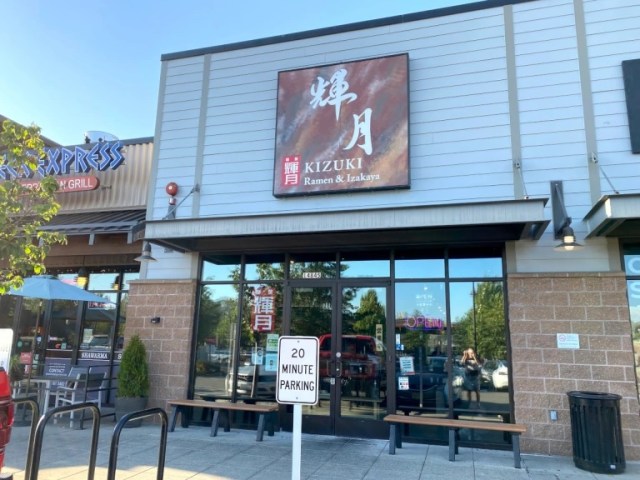
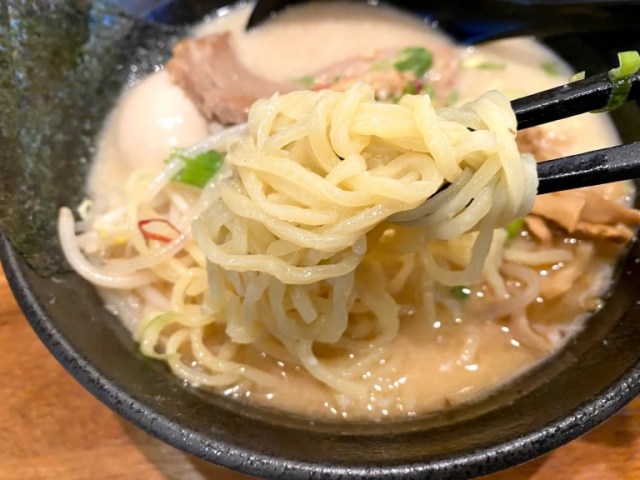

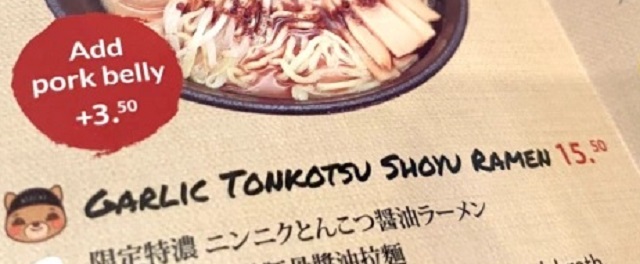
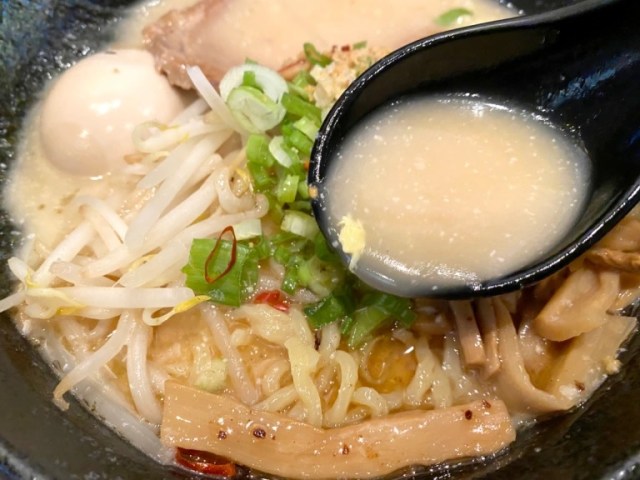
 What?!? Turns out kids eat for free at one of Japan’s best ramen chains, and hardly anyone knew
What?!? Turns out kids eat for free at one of Japan’s best ramen chains, and hardly anyone knew Instant vs. Restaurant Ramen Project: Ippudo spicy miso tonkotsu battle【Taste test】
Instant vs. Restaurant Ramen Project: Ippudo spicy miso tonkotsu battle【Taste test】 We try out Nissin’s new Cup Noodle Broth Hardening Powder to see if it really works
We try out Nissin’s new Cup Noodle Broth Hardening Powder to see if it really works Line of foreign tourists leads us to Akihabara’s meatiest fatty ramen【Taste test】
Line of foreign tourists leads us to Akihabara’s meatiest fatty ramen【Taste test】 Tokyo’s new frozen ramen vending machines are brain-breakingly amazing【Taste test】
Tokyo’s new frozen ramen vending machines are brain-breakingly amazing【Taste test】 Non-tourist trap fish market in northeastern Japan captures our hearts with amazing sashimi
Non-tourist trap fish market in northeastern Japan captures our hearts with amazing sashimi Kyoto becomes City of Yokai, with Night Parade of One Hundred Demons festival this autumn
Kyoto becomes City of Yokai, with Night Parade of One Hundred Demons festival this autumn Japan’s newest life-size Gundam is finished, receives Shinto blessing in Osaka【Video】
Japan’s newest life-size Gundam is finished, receives Shinto blessing in Osaka【Video】 Chinese drivers flocking to Japan for quick and easy route to international licenses
Chinese drivers flocking to Japan for quick and easy route to international licenses One of Japan’s most awesome rail passes, the Seishun 18 Ticket, just got a lot less awesome
One of Japan’s most awesome rail passes, the Seishun 18 Ticket, just got a lot less awesome No train, no hotel – How to do an overnight bus trip to Kanazawa from Tokyo – Part 1【Photos】
No train, no hotel – How to do an overnight bus trip to Kanazawa from Tokyo – Part 1【Photos】 McDonald’s Japan debuts new anime girl mascot character with incredibly long name
McDonald’s Japan debuts new anime girl mascot character with incredibly long name Korean basketball coach humiliates player live on TV, tapes his mouth shut
Korean basketball coach humiliates player live on TV, tapes his mouth shut We try a delicious hidden gem in Fukuoka, unknown to even Japanese people
We try a delicious hidden gem in Fukuoka, unknown to even Japanese people Studio Ghibli releases new “Butterflies in the Forest” Totoro towels
Studio Ghibli releases new “Butterflies in the Forest” Totoro towels What’s the deal with akebi, the perfectly purple, alien-like fruit that’s in season now in Japan?
What’s the deal with akebi, the perfectly purple, alien-like fruit that’s in season now in Japan? Totoro, Calcifer, other Ghibli stars returning as humidifiers ahead of Japan’s dry winter days【Pics】
Totoro, Calcifer, other Ghibli stars returning as humidifiers ahead of Japan’s dry winter days【Pics】 Is downtown Tokyo’s crazy cheap 290-yen bento boxed lunch shop still around, and is it still cheap?
Is downtown Tokyo’s crazy cheap 290-yen bento boxed lunch shop still around, and is it still cheap? Meet the kind Japanese grandpa who takes photos for tourists at the Hachiko statue in Shibuya
Meet the kind Japanese grandpa who takes photos for tourists at the Hachiko statue in Shibuya Studio Ghibli releases new mug tumblers featuring anime movie characters
Studio Ghibli releases new mug tumblers featuring anime movie characters How to power up the coolest cheap souvenir from Nintendo’s official shop with a trip to Daiso
How to power up the coolest cheap souvenir from Nintendo’s official shop with a trip to Daiso Why was the Lithuanian ambassador to Japan working in a fast food beef bowl joint in Tokyo?
Why was the Lithuanian ambassador to Japan working in a fast food beef bowl joint in Tokyo? Line of foreign tourists leads us to Akihabara’s meatiest fatty ramen【Taste test】
Line of foreign tourists leads us to Akihabara’s meatiest fatty ramen【Taste test】 Japanese convenience store Family Mart announces abolishment of eat-in spaces
Japanese convenience store Family Mart announces abolishment of eat-in spaces Studio Ghibli releases new insect whistle necklace from Nausicaä of the Valley of the Wind
Studio Ghibli releases new insect whistle necklace from Nausicaä of the Valley of the Wind Totoro sequel anime Mei and the Baby Catbus will screen at Ghibli Park this winter
Totoro sequel anime Mei and the Baby Catbus will screen at Ghibli Park this winter Starbucks Japan unveils Halloween Frappuccino for 2024, and it’s like drinking a magic spell
Starbucks Japan unveils Halloween Frappuccino for 2024, and it’s like drinking a magic spell Evangelion creator Hideaki Anno returning to anime with new project for 50-year-old franchise
Evangelion creator Hideaki Anno returning to anime with new project for 50-year-old franchise Studio Ghibli releases new Howl’s Moving Castle goods that capture the magic from the anime movie
Studio Ghibli releases new Howl’s Moving Castle goods that capture the magic from the anime movie Adult Jam Bread causes a stir at store in Tokyo
Adult Jam Bread causes a stir at store in Tokyo Right now is the peak time to go to Tokyo’s most-beautiful-view beer garden【Photos】
Right now is the peak time to go to Tokyo’s most-beautiful-view beer garden【Photos】 Pizza Hut adds a “Guilty Secret” sandwich to its menu for a limited time
Pizza Hut adds a “Guilty Secret” sandwich to its menu for a limited time McDonald’s new Happy Meals offer up cute and practical Sanrio lifestyle goods
McDonald’s new Happy Meals offer up cute and practical Sanrio lifestyle goods Foreign tourists on Shinkansen bullet train break suitcase etiquette, angering local passengers
Foreign tourists on Shinkansen bullet train break suitcase etiquette, angering local passengers [Deleted] Article written for April Fool’s Day 2018
[Deleted] Article written for April Fool’s Day 2018 Japanese government to make first change to romanization spelling rules since the 1950s
Japanese government to make first change to romanization spelling rules since the 1950s Foreigner’s request for help in Tokyo makes us sad for the state of society
Foreigner’s request for help in Tokyo makes us sad for the state of society Ghibli founders Toshio Suzuki and Hayao Miyazaki contribute to Japanese whisky Totoro label design
Ghibli founders Toshio Suzuki and Hayao Miyazaki contribute to Japanese whisky Totoro label design Tokyo’s most famous Starbucks is closed
Tokyo’s most famous Starbucks is closed Princesses, fruits, and blacksmiths: Study reveals the 30 most unusual family names in Japan
Princesses, fruits, and blacksmiths: Study reveals the 30 most unusual family names in Japan Doraemon found buried at sea as scene from 1993 anime becomes real life【Photos】
Doraemon found buried at sea as scene from 1993 anime becomes real life【Photos】 Ramen made by a sauna shop opens its doors in Tokyo
Ramen made by a sauna shop opens its doors in Tokyo We found a popular Japanese ramen chain in South Korea!…or so we thought
We found a popular Japanese ramen chain in South Korea!…or so we thought “Do you want some ramen with those eggs?” Our reporter tries ramen with ALL THE EGGS!
“Do you want some ramen with those eggs?” Our reporter tries ramen with ALL THE EGGS! Sriracha vending machines rising in Japan, our reporter tries it for first time (with Cup Noodle)
Sriracha vending machines rising in Japan, our reporter tries it for first time (with Cup Noodle) Truck drivers love this Saitama Ramen Shop, but will it win our hearts?【Taste test】
Truck drivers love this Saitama Ramen Shop, but will it win our hearts?【Taste test】 Clash of the instant ramen! Taste-testing seven instant noodles on a flavor trip across Kyushu
Clash of the instant ramen! Taste-testing seven instant noodles on a flavor trip across Kyushu Edible culture shock: Our Japanese reporter tries American barbecue for first time【Taste test】
Edible culture shock: Our Japanese reporter tries American barbecue for first time【Taste test】 Japan’s first-ever wanko soba conveyor belt restaurant opens in Tokyo
Japan’s first-ever wanko soba conveyor belt restaurant opens in Tokyo Mint chocolate tapioca ramen appears in Tokyo: Too much to handle or too good to believe?
Mint chocolate tapioca ramen appears in Tokyo: Too much to handle or too good to believe? We ate all eight kinds of cold noodles from 7-Eleven and here’s our favourites【Taste test】
We ate all eight kinds of cold noodles from 7-Eleven and here’s our favourites【Taste test】 Have you tried Tokushima ramen? No? You should (says our obsessed Japanese-language reporter)
Have you tried Tokushima ramen? No? You should (says our obsessed Japanese-language reporter) Sea urchin ramen – Not for the faint of heart!
Sea urchin ramen – Not for the faint of heart! “The most Delicious Cup Noodle in history” – Japan’s French Cup Noodle wins our heart【Taste test】
“The most Delicious Cup Noodle in history” – Japan’s French Cup Noodle wins our heart【Taste test】 Japan has instant ramen booster packs, and we’re not even trying to restrain ourselves【Taste test】
Japan has instant ramen booster packs, and we’re not even trying to restrain ourselves【Taste test】 Is ramen pizza just crazy enough to work? Japanese restaurant’s unusual menu lets us find out
Is ramen pizza just crazy enough to work? Japanese restaurant’s unusual menu lets us find out
Leave a Reply